Bacopa: description, varieties, planting and care
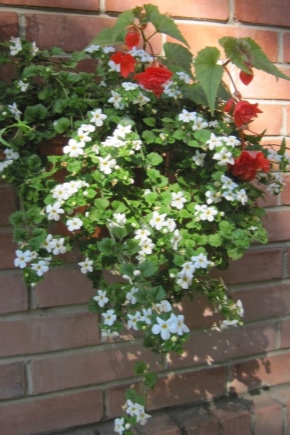
Bacopa is an amazingly beautiful herb that gives a special charm to flower beds, terraces, balconies, and some of its varieties to home aquariums and artificial reservoirs. Seedlings of this shrub can be found in specialized stores or grown independently from seeds.
What is Bacopa, which varieties are the most popular among our compatriots, how to properly care for this plant and use it in gardening, we will tell you in this article.
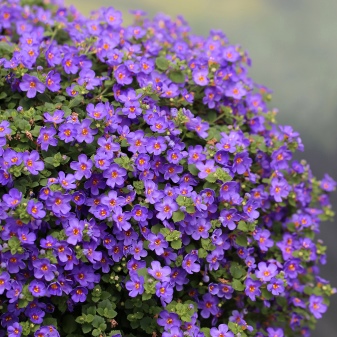
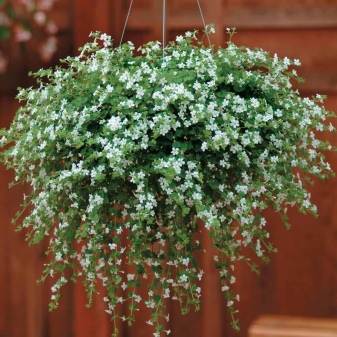
Description
Bacopa is better known as sutera. In nature, it grows like an aquatic plant, so it is often grown in artificial reservoirs and aquariums. The culture comes from the South African territories, it can also be found in the Canary Islands and in some countries in Asia.


In the design of loggias, terraces and gardens, the ampel variety is mainly used. Bacopa is grown as a climbing plant, planted in greenhouses and flower beds as part of mixed plantings.

The length of the shoots reaches 50-60 cm. The culture is a creeping form. Small flowers with five leaves grow from the corners of the leaf plates. Bacopa usually blooms so profusely that people in the UK even call it “snowflakes”. The flowers are quite small, depending on the variety, they can be double or simple. With the advent of dark, they close. You can often hear about pink and purple sutera, but still the most common in our country are white flowers.

This plant retains its attractive appearance even during prolonged rainstorms, does not lose its decorative effect in the wind and in hot weather. Not only inflorescences are attractive, but also small leaves growing on elongated shoots. The foliage is lanceolate, whole, small.
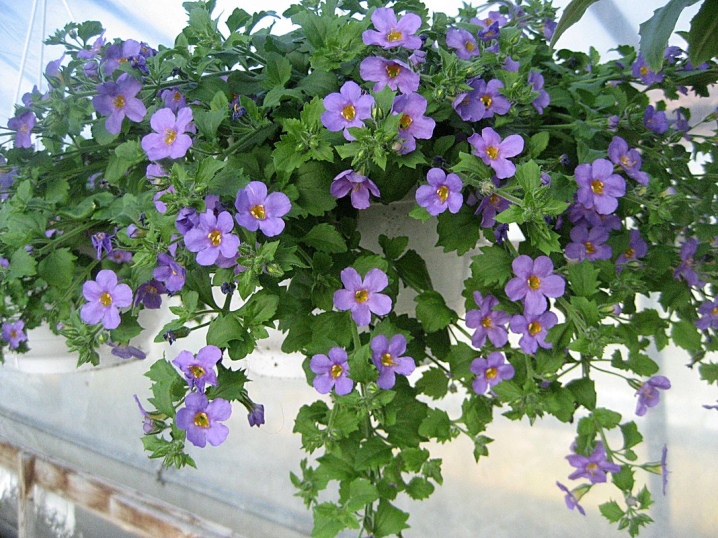
Types and varieties
There are over 60 varieties of Bacopa that can be grown at home. Each of them needs different growing conditions.... Conventionally, all the variety can be divided into several categories: these are aquatic varieties, succulents and ampelous plants.
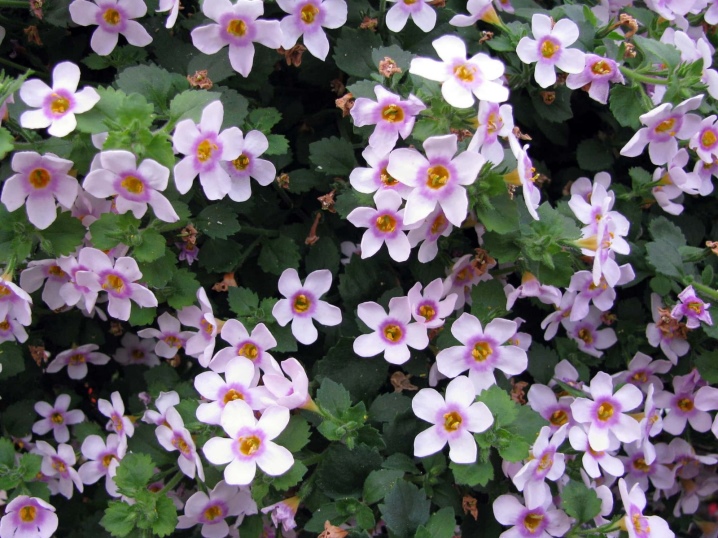
The crops that are cultivated in aquariums and artificial reservoirs include the following varieties.
- Karolinska. This is a plant with thickened straight stems, oval paired leaves are located on them. As a rule, they are rigid and have an elongated oval shape. The height of such a bush does not exceed 25-30 cm. The flowers are located at the very tips of the stems, have a deep blue tone. The color of the leaf plates makes the Caroline Bacopa especially attractive: in the rays of the sun, it changes its delicate green color to a deep reddish-red.
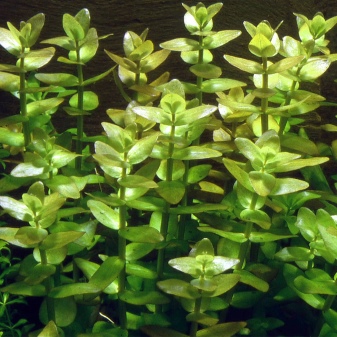

- Australian. This is a low bacopa with delicate shoots branched in different directions. Flowers are painted in pale blue paints, are placed on the surface of fragile shoots. The leaves grow up to 17 mm, have a rounded or oval shape, their shade is light green.
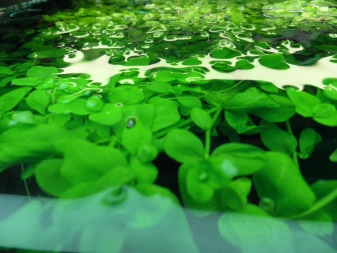
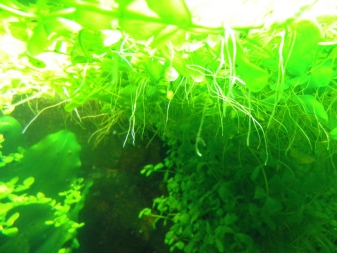
- Colorata. A variety of aquatic bacopes, a distinctive feature of which is a beautiful yellowish-pinkish foliage. Depending on the light intensity, the shade of the leaf plates may change. Paired leaves are pointed, grow on shoots.
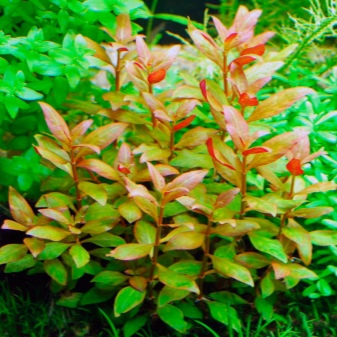
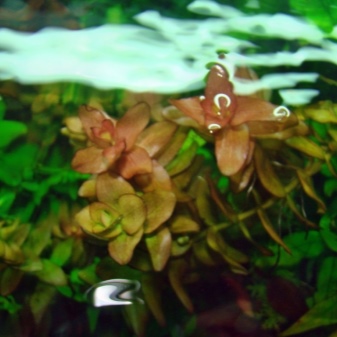
- Cross Madagascar. Small bacopa, grows no more than 15-20 cm. Shoots are weakly branching, leafy plates are fleshy, lanceolate, arranged crosswise or oppositely.
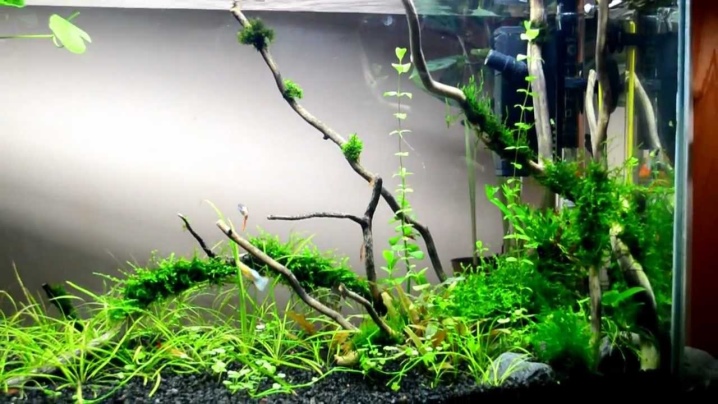
- Monier. The most famous succulent that can be grown both in artificial reservoirs and on balconies is Monnier's bacopa. This plant is distinguished by creeping stems and elongated leaf blades, the size of which varies from 8 mm to 2 cm, the tops are rounded, and notches are noticeable along the edges. Flowers are located in the small axils of the leaves. They are quite large - the corolla can reach 1 cm in diameter. Most often, the flowering is snow-white, purple and blue flowers are less common. The height of the bush is 35-45 cm. Bacopa Monye (brahmi) is quite popular among traditional healers. It is used to improve brain activity and improve concentration and memory.


Popular types of bacopa for growing on balconies are the following.
- Sprawling. This variety is better known as "beautiful". It is a large-flowered variety and forms a rather lush bush with elongated shoots up to 55-60 cm. The diameter of the flower is 2 mm, each has 5 petals growing from the leaf axils. Throughout the summer, as well as at the beginning of autumn, the bush is abundantly strewn with flowers of white, creamy, pink, and also blue shades. The spreading sutera is optimal for decorating individual compositions, as well as group plantings, looks spectacular in containers and pots - its hanging down or creeping stems cover it like a flower cloak.
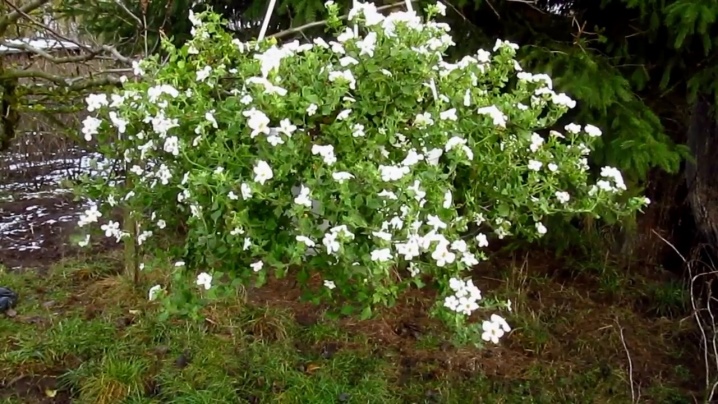
The sprawling bacopa is especially popular with flower growers due to its significant growth rate, strong stems and lush flowering.

- "Blutopia" and "Snowtopia". These are hybrids, a distinctive feature of which is abundant flowering. The size of the shoots is 25-30 cm. The flowers are quite large, in Blutopia they are purple-blue, in Snowtopia they are white. The leaf plates are olive-colored.
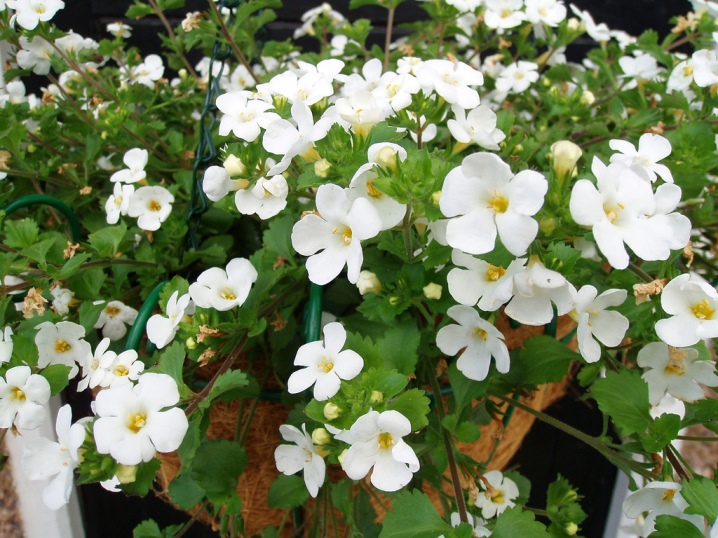
Judging by the reviews, Bacopa monnieri, Zaltsmana, and also Ampleksilis varieties are popular with flower growers.
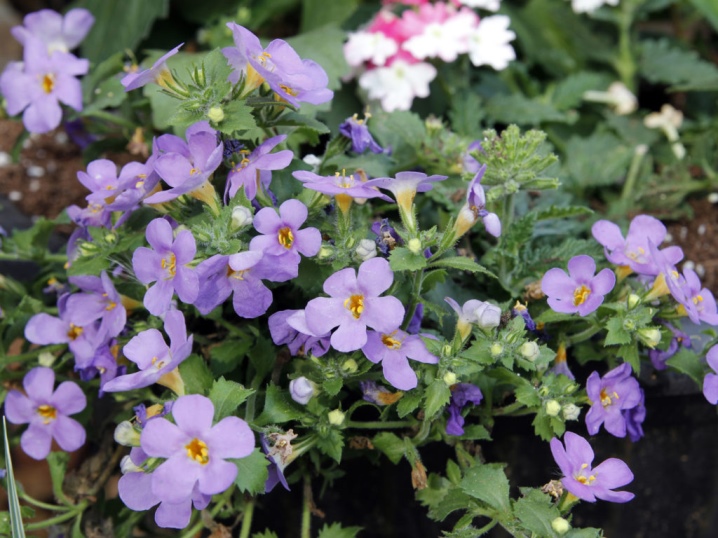
Features of growing at home
When growing suters in a home environment, it should be borne in mind that this culture is characterized by increased demands in terms of lighting. For for Bacopa to delight you with a long and lush flowering, the duration of daylight hours should be at least 10-11 hours, therefore, when growing a crop in a room, especially in the autumn-winter period, it requires mandatory additional lighting.

In the summer, sutera can be “relocated” to the street - it grows well in the fresh air, being in a variety of climatic zones. With the onset of autumn, the bush must be dug up and placed in a cool, but well-lit room - this can be a veranda or a glazed balcony. The permissible temperature for wintering is 8-15 degrees.
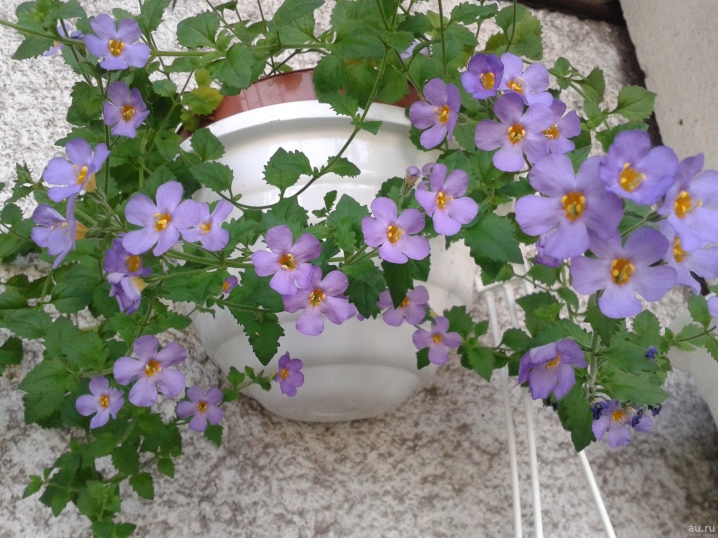
The plant should be pruned during transplanting. Keep in mind that the culture does not tolerate dry air, so you should not grow it near radiators or other heating appliances. The plant comes from a subtropical climate, so Bacopa is very hygrophilous - it needs to be watered at least once a day, and more often in hot summer.
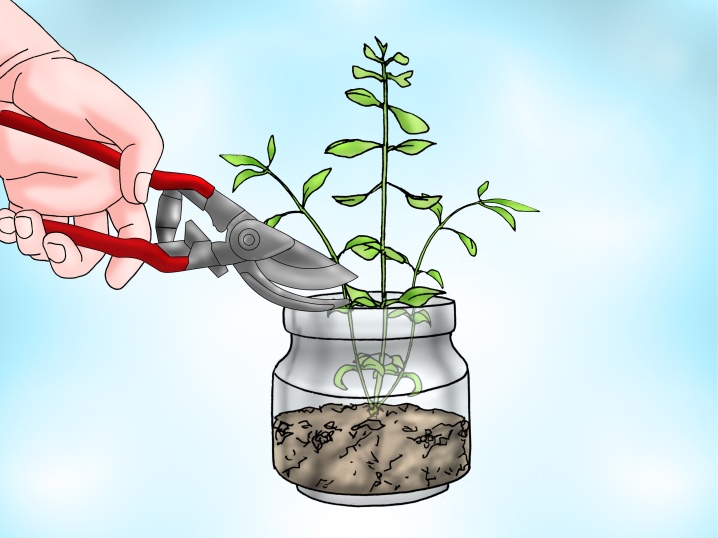
Aquatic varieties are widespread in aquarium hobby and often inhabit artificial reservoirs. The water temperature in the aquarium should be between 22-28 degrees, otherwise flowering will be inhibited. The water in the reservoir should have a mild acidic reaction. It is important that a 2-3 cm layer of pebbles or river sand is poured in the aquarium, the substrate may be slightly silted.
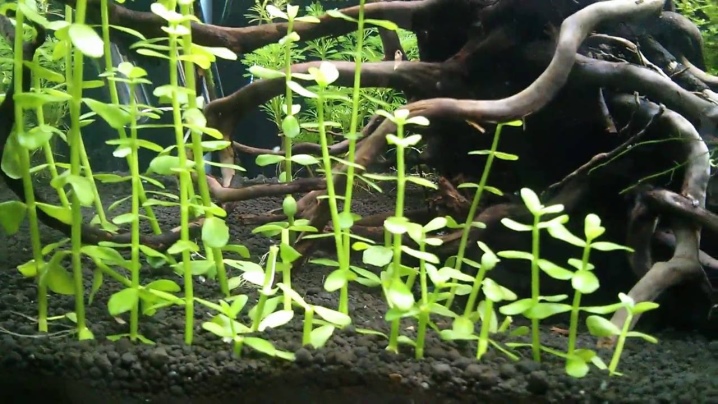
We draw attention to the fact that the aquarium bacopa receives all the useful elements it needs for growth and development from the water, so it does not need additional feeding.The source of micronutrients for aquatic bacopa is the waste products of fish, as well as their food. Bacopa Monje usually prefers slightly salted and hard water.
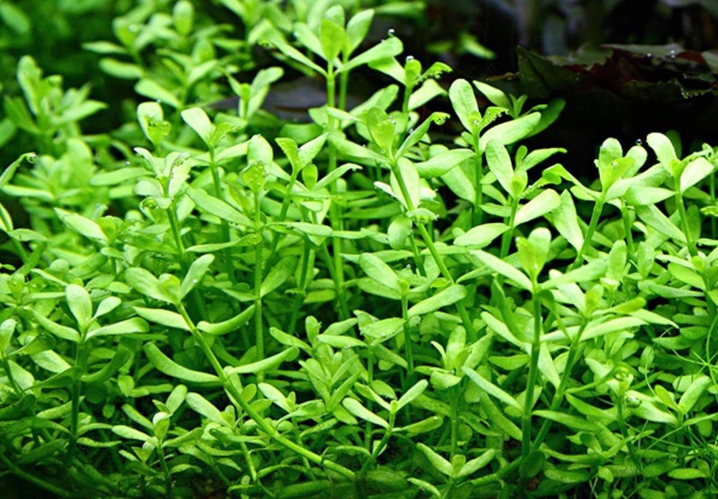
How to plant in open ground?
Let us dwell in more detail on the peculiarities of growing a suter on the street in a flower pot.
The southeast side is the best place for culture. Despite its African origin, Bacopa needs a couple of hours, especially on a hot afternoon, to be in partial shade. The plant prefers fertile soils, moderately moist, with high permeability and slightly acidic soil reaction.

Maintaining an optimal moisture level is the most important factor that affects the entire process of growth and development of a suter. Thin shoots of the flower should be protected from strong winds, as drafts can damage the young seedling and thereby lead to its malformation.
Bacopa can be planted in open ground or in a pot located on the balcony only after the threat of return frosts has passed - as a rule, in the central part of Russia this corresponds to the second half of May. The seedlings should be placed 25 cm apart in all directions.
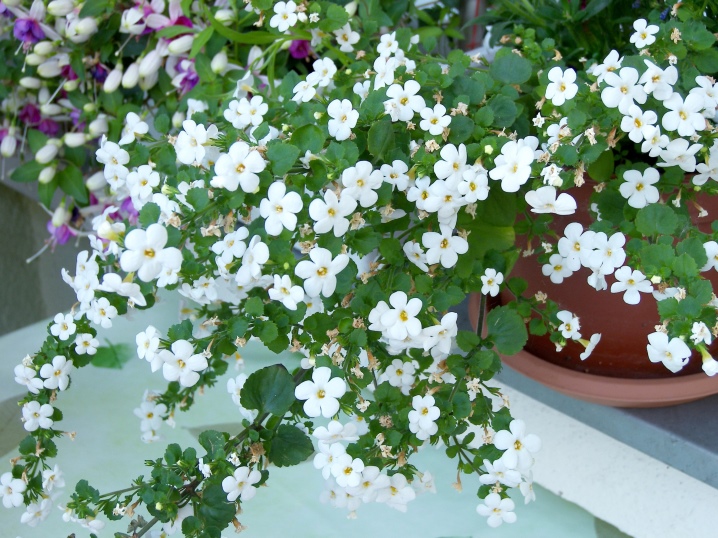
How to take care of it properly?
Sutera is an unpretentious plant, so it is not difficult for a gardener to care for it, it is enough to follow simple rules, and the culture will delight you with its lush flowering for many months.

Watering
The main secret of successful growth and development of a suter is proper watering. The fact is that This crop is highly susceptible to drought and should be moistened regularly to ensure that the clod never dries out completely. At the same time, the culture does not tolerate excessive moisture - its roots, with excessive irrigation, begin to rot, which leads to a suspension of growth and development, and then to the death of the entire flower.
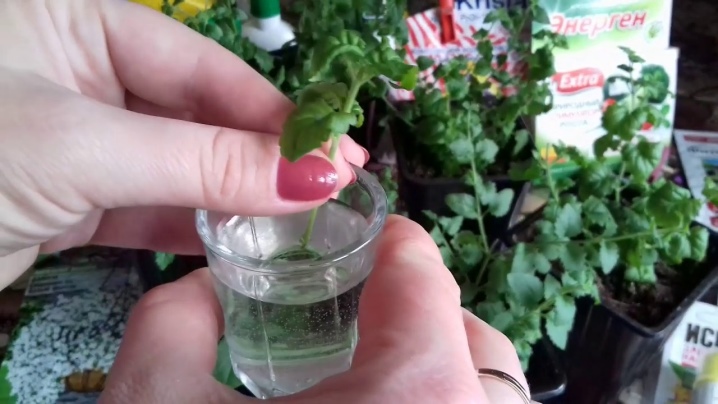
When planning to plant bacopa in one pot with other flowers or on your own, you should definitely add up to 1/3 of the volume of the substrate of any baking powder to the soil. It can be perlite, vermiculite or fine grained pebbles with a grain size of less than 0.5 mm. This method will help you protect the plant from the excess moisture that invariably occurs in peat.

Top dressing
Due to its high growth rate and lush, long flowering, Bacopa requires frequent feeding - in this regard, it can be compared with crops such as surfinii and pelargonium. It is best to use liquid fertilizer, which can be purchased at any specialty store. The drug is added during watering, it is mixed with water and every second irrigation is applied, but only half of the recommended dose is used.

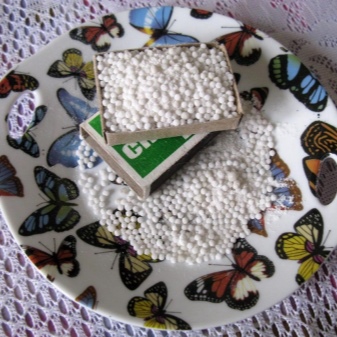
It is better to give preference to fertilizers, which are intended for feeding bacopa and surfinia. The fact is that these plants are highly sensitive to iron, namely, special fertilizers contain a lot of it, and in an easily assimilated form. If the culture is deficient in trace elements, it will bloom poorly.
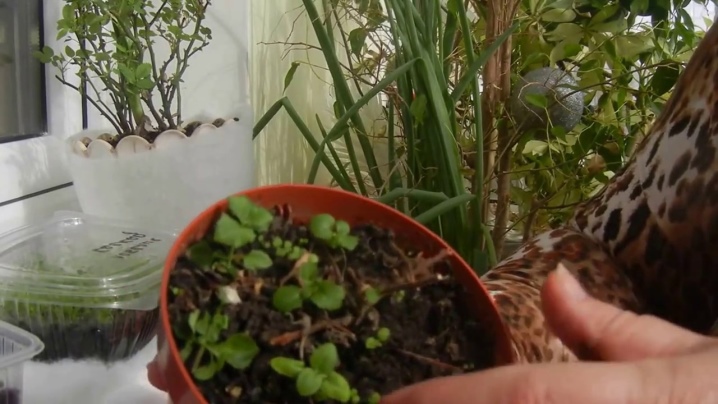
In the first half of autumn, the plant enters the resting phase. It lasts until March, at which time there is no need for feeding.
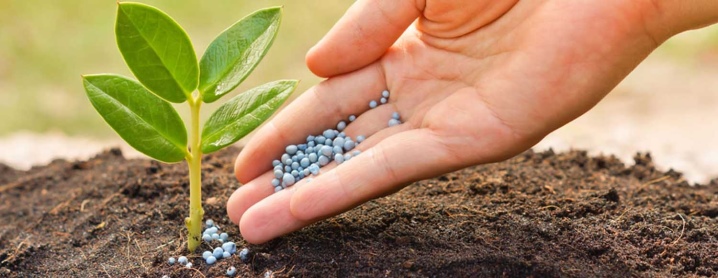
Wintering
If you plan to get more seedlings for the next season, you can try to keep the bacopa until spring. For this bushes must be cut at a level of 15-20 cm above the ground, and then transferred to a bright room, the air temperature in which the composition does not exceed 20 degrees, and better - about 10 degrees.

Remember to transplant the sutera into a new pot with renewed substrate every year. This is best done in the spring before flowering. For this the plant should be removed from the previous container, shake off the rest of the soil, carefully examine the root system and, if necessary, remove all dried and rotten roots... It is best to use a pot with large drainage holes. The best option would be a shallow, wide container, since the bacopa root system is superficial.
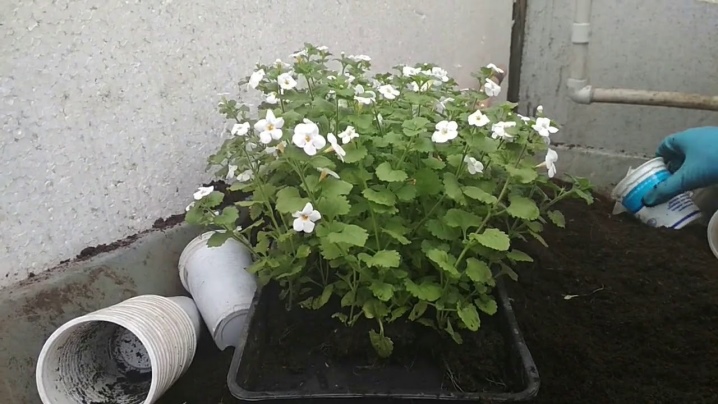
The flower is placed in the very center of a new pot and sprinkled with fresh substrate around the perimeter. After transplanting, the culture should be well watered until the soil is completely moistened. The excess moisture released into the pallet is removed. If you notice that after moistening the soil has settled heavily, you need to add the required amount of soil.

Reproduction methods
Reproduction of bacopa at home is not difficult.
Most often, the grafting method is used for this. This vegetative propagation method completely preserves all varietal characteristics, in addition, biennial, as well as older plants bloom much worse, so cuttings allow you to update the culture and return it to its decorative appearance.
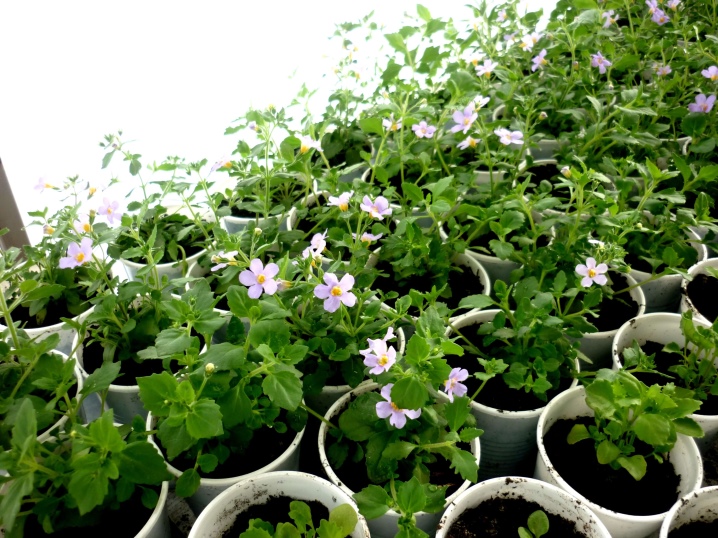
Cuttings are carried out in the last decade of February - the first half of March. To do this, it is necessary to cut the shoots into fragments 8-15 cm long and place them in a vessel with water. After that, the cuttings are transferred to the ready-made soil for seedlings, which must be loose. For to speed up the rooting process, you can treat the planting material with Kornevin or any other root formation stimulator.

Cuttings of aquatic varieties are simply allowed to swim in an artificial reservoir until they give rise to roots.
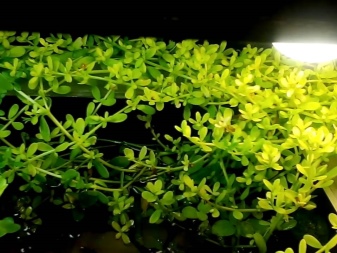
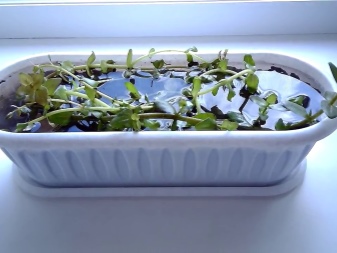
Bacopa can also be sown with seeds. For this, the collected planting material is kept in a moist substrate for a day, and then transferred to a container with soil mixture for further germination. You do not need to deepen the seeds - just press them to the ground and lightly sprinkle them.
To create the most comfortable microclimate for the germination of a culture, it is advisable to close the container with glass or film, but do not forget to periodically open the shelter in order to air it.
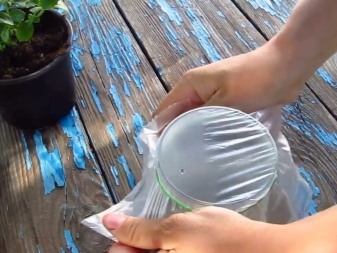
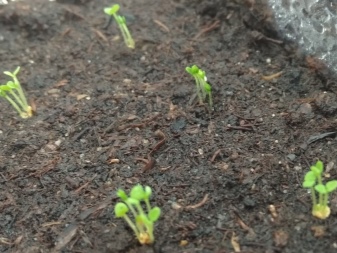
The soil should be moistened as often as possible from a spray bottle, it should in no case dry out. The optimum temperature for germination is 22-26 degrees. Subject to all the requirements of agricultural technology, the first shoots appear in 14-20 days. After the appearance of three leaves, the first dive into separate containers is made, and when they become small, the seedlings dive a second time.
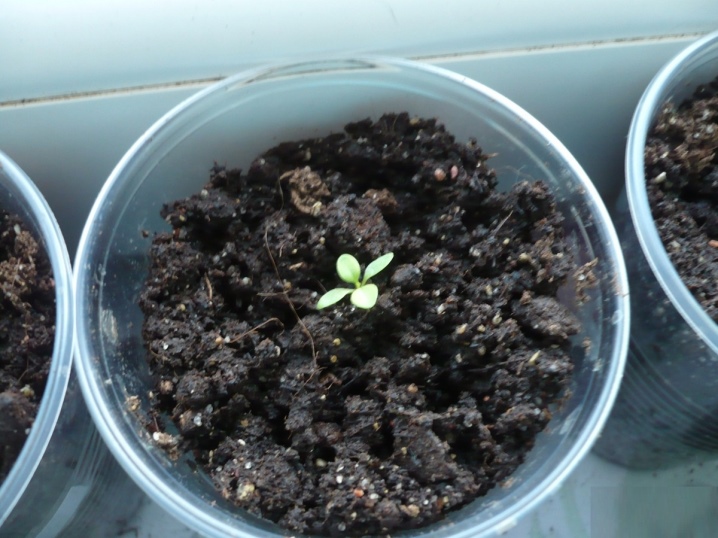
Young seedlings should be fed every week with complex fertilizers., diluted 2-3 times in comparison with the recommended dosage for adult cultures. After a month, the seedlings will be completely ready for transplanting in open ground. At this point, it is necessary to harden it. To do this, the seedlings are taken outside for several hours a day in order to accustom the young plant to natural light.
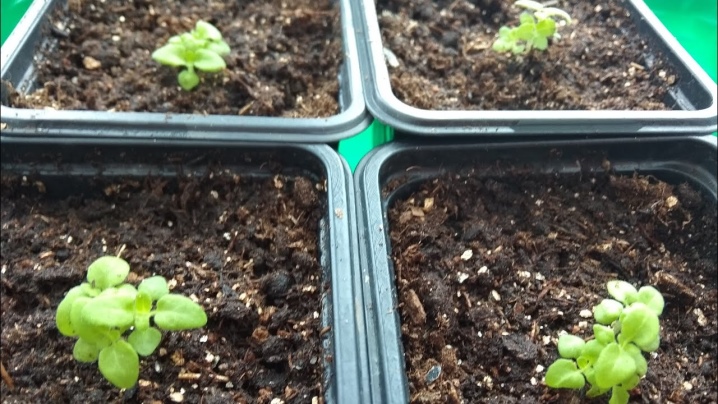
Street varieties can be propagated by air layers. To do this, elongated shoots are pinned to the surface of the soil, and then sprinkled with earth a little. After a while, you will notice that new shoots have begun to form in the corners of the leaf plates. Thus, several renewed plants can be obtained from one shoot at once.

Diseases and pests
Failure to comply with agricultural techniques has the most detrimental effect on the state of bacopa:
- if the plant is grown in partial shade, the flowering becomes less abundant;
- if the sutera is kept in excessively warm conditions in winter, its shoots become loose and elongated, the lower leaves are thrown off;
- with excessive fertilizing with nitrogen-containing preparations, an increased build-up of green mass begins, while the plant does not have the strength to bloom;
- when the weather is too hot, the leaves of the plant turn yellow.
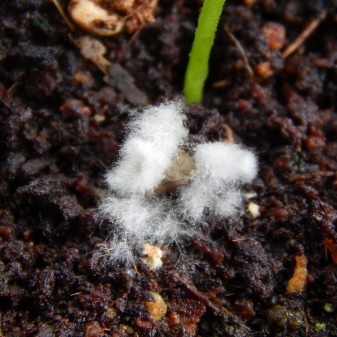
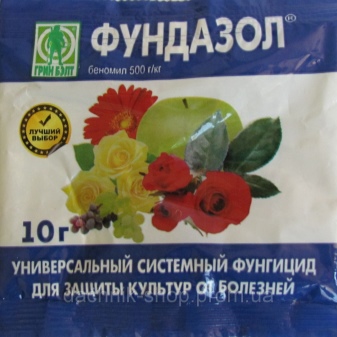
If you grow bacopa in uncomfortable conditions and do not provide it with the necessary moisture, it often encounters fungal diseases. In most cases, the plant is affected by soot or mold, as well as gray mold. This happens especially often when the planting is too thick. If you notice signs of fungal infection on the bushes, it is imperative to remove all damaged areas and treat the bush with fungicides. Spraying is repeated two weeks later.

Spider mites and whiteflies can cause great harm to the plant. These garden pests feed on the plant's vital juices and are sucking insects. Acaricidal compounds can be used to neutralize them. It usually takes 3-4 treatments to get rid of all parasites.
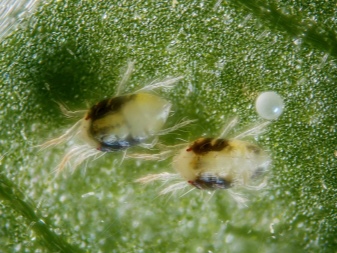
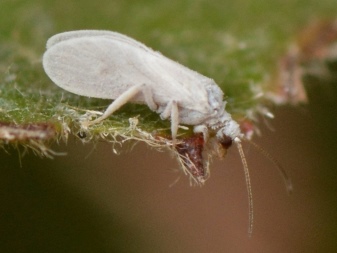
Use in landscape design
Bacopa looks very impressive in hanging pots, as well as in flower beds as a ground cover. This plant, in its beauty, can quite compete with ampelous petunia and pelargonium, therefore the plant is widely used for vertical gardening.
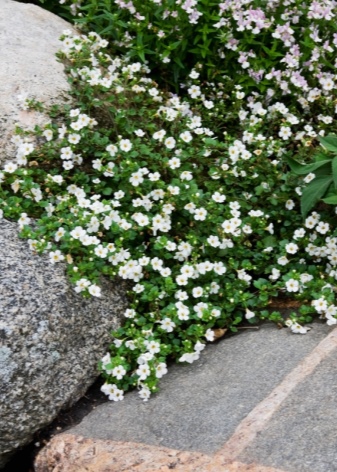
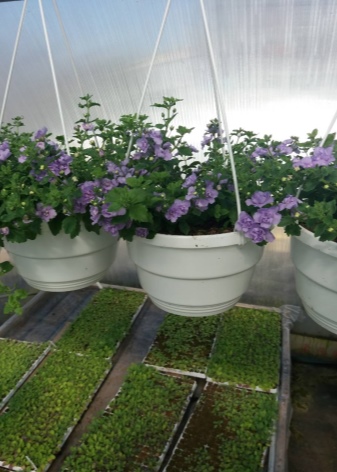
Sutera is combined with ageratum, lobelia and nasturtium; it is often grown by lovers of spectacular compositions in hanging pots.
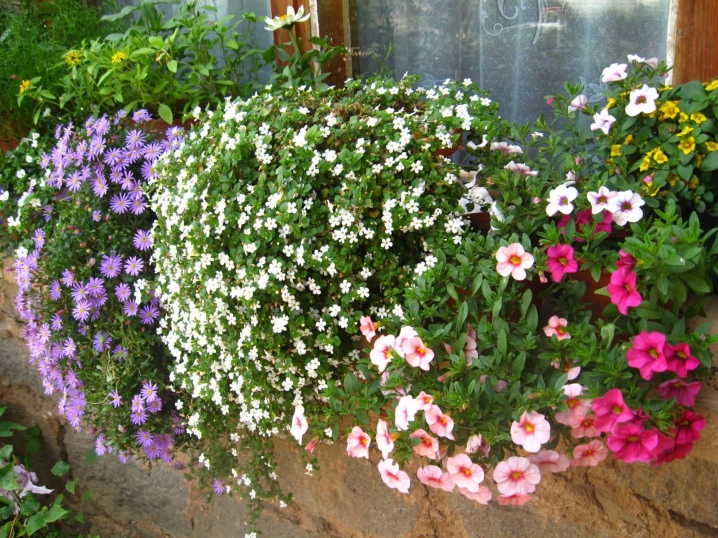
Bacopa can be used to create screens of an unusual shape, emphasizing the brightness of the color of nearby plants.
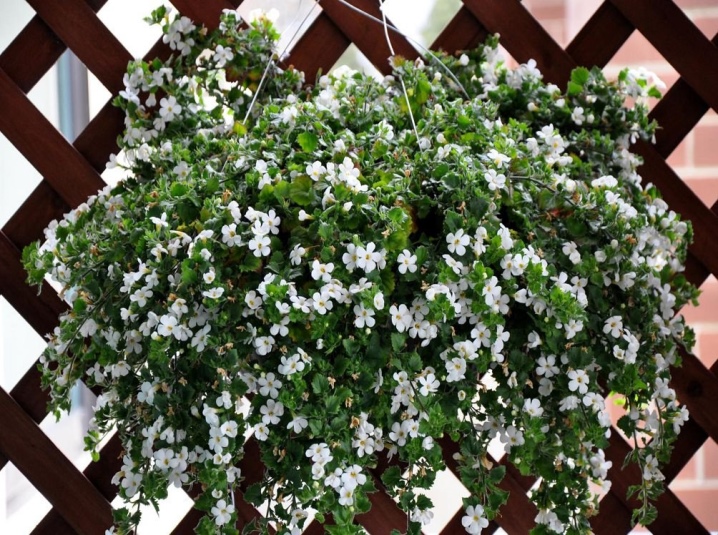
Ampel pimps are often used to mask bald patches in areas, since this culture can form a dense flowering carpet. The plant grows very quickly, so it is not difficult to achieve a decorative effect.
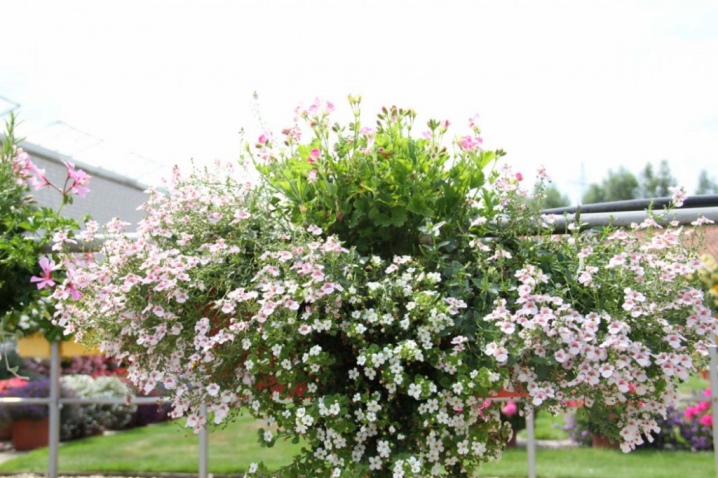
Thanks to the use of various microelements in dressing, it is possible to change the saturation of the color of the foliage, which makes the planting even more spectacular.
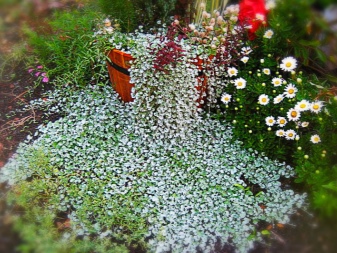
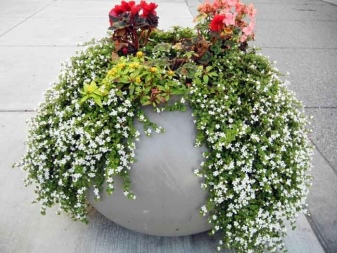
Unfortunately, with age, Bacopa begins to lose the attractiveness of flowering. So, in the second year of cultivation, the stems are already bare. Such specimens need to be replaced in a timely manner with new ones, then your flower bed will always look perfect.
You can learn more about Bacopa from the video below.







































































































The comment was sent successfully.